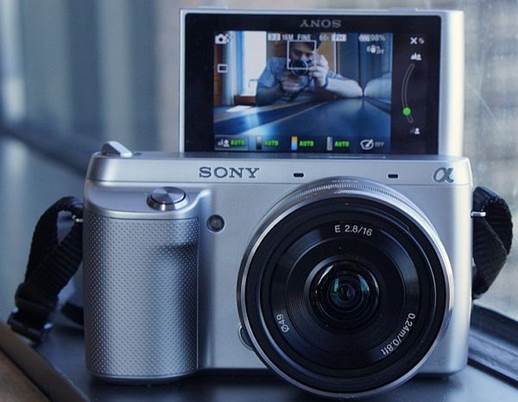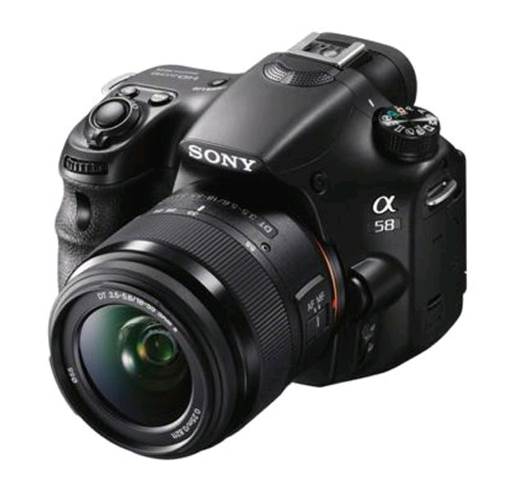User interface
Though better or worse, there’s no change
in terms of UI. In fact, we won’t be surprised when hearing that Sony has laid
off the entire group of user interfaces after the first release of NEX, based
on the fact that software changes is minimum. This usually good news to the
current NEX owners – everything has its seat as you expected, making the jump
from another model easy. 2 additions we find on NEX-5R, Wi-Fi and the touch
screen, are all missing here, though we don’t remember the first heavy feature.

2
additions we find on NEX-5R, Wi-Fi and the touch screen, are all missing here,
though we don’t remember the first heavy feature.
When reviewing 5R, we found it hard to take
use of the built-in Wi-Fi of the camera, which theoretically will enable the
wireless share and a small group of “apps”. Once we made the accompanying smartphone
app recognize the camera, everything moved with an uncomfortable speed, which
meant you had to wait for so long to transfer files. Sending images directly
from the camera to the sharing website, though possible, also had meaning of
disappointment – typing Wi-Fi username and password by using the small camera
is extremely messy. About PlayMemories Camera Apps in the camera, we can hardly
find any usable thing there, and while Sony promised to add new features with
the price for each, the store wouldn’t open for the third-party developers, and
the app is currently limited with pretty weak visual effect.
On the other hand, the touch screen proves
to be useful for focus tracking while recording video. It also proves to be
convenient when navigating menu and the adjusting the quick settings. touch interface
never feels like an obstacle and for the built-in hardware controls, using it
is always the option, while we waste a little of time to get familiar to the
touch-supported screen, its absence here is one of the first thing we notice,
so if touch is important to you, you will always want to try NEX-5R.
Another feature we see on the NEX line is
the separate dial mode, which is also missing here – if you want to put a test
on this thing on the camera, considering the 900USD NEX-6. You still have that
function with 3N, though jumping from mode to mode will require you to enter
the interface of the camera, increasing the level of complication a little bit.
However, you have optional Intelligent Auto, Superior Auto, Program, Aperture Priority,
Shutter Priority, Manual, Sweep Panorama and Scene Selection mode, all of which
can be selected by using the back wheel of the camera.

Another
feature we see on the NEX line is the separate dial mode, which is also missing
here.
We normally don’t pay much attention to the
scene modes, but Sony has some good modes, even Hand-held Twilight, which takes
many shots continuously from the dark scenes with each press, combines the
frames together to have a smooth, stable night shot. That’s not something
you’ll be able to do in manual mode, and it’s not very visual in fact. There’re
some pretty good Picture Effects, such as Toy Camera, Pop Color and Partial
Color, keeping you selected (red, green, blue or yellow) while making the rest
of the frame having grey color.
For the newcomers to the NEX ecosystem, we
will talk about the basic menu structure. Many main settings, such as ISO
shooting mode, can be changed by using the dedicated controls like we have
outlined above. However, many adjustments require to access the menu system,
such as choosing image size, file type of recorded video, turning off the camera
beep, formatting the SD card…. The interface is not too clumsy, but it’s not
the most visual thing we’ve ever seen.
Performance and battery life
A big fault of NEX-F3 (and the models that
come before it) is low focus speed, luckily, most of the problem is solved with
5R, and the improvements are currently brought to the basic mode. Performance
can’t compare to what you’ll have with most of the DSLRs or even the Micro Four
Thirds cameras from Olympus, but it’s better than what we used to see with Sony,
even what you’ll receive for now with the cameras such as Canon EOS-M.

A
big fault of NEX-F3 (and the models that come before it) is low focus speed, luckily,
most of the problem is solved with 5R, and the improvements are currently
brought to the basic mode.
Throughout our test, the camera was on and
took the first shot in 2 seconds. There’s a 0.2 second delay between pressing
the button and when 3N captured the shot. About high-speed continuous shooting,
you have 2 options, including Speed Priority mode shooting, which delivers the
speed of 4fps, and regular mode which can shoot at 2.5fps. on the other hand, NEX-6
of Sony can capture at 10fps, so if speed is a priority, 3N isn’t necessary
your best choice.
Battery life is quite impressive for a
camera of this size. Sony chose 1,080mAh NP-FW50 battery, great news for the
prior NEX owners who may have 1 or 2 backup batteries. With a full charge, we
can shoot more 1,400 images and 90minutes of video, despite some minutes of
rummaging in menu and reviewing the images. You should hope that 3N lasts
through a day of visiting, for example, but you may want to bring your backup
battery in the lasting trips just in case. Fortunately, the camera charges by
using any source of USB power, so you can easily charge it on your way.